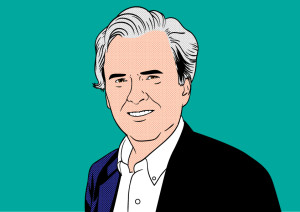What Makes a Credit Union a Success?
By Robert McGarvey
Do you believe Fox Communities Credit Union in Appleton, WI is the nation’s best performing credit union?
S&P Global Market Intelligence does and therein lies the seeds of a fierce debate.
I am not pointing a mocking finger at Fox Communities. No doubt it is a fine institution.
I do have questions about the how of the S&P ratings.
“Their metrics make no sense,” a longtime credit union analyst grumbled to me when he brought this story to my attention. He requested anonymity mainly because credit union people don’t like to be seen as boat rockers.
But two things – he may be absolutely right that the metrics used by S&P Global make little real world sense and just maybe, too, some aggressive boat rocking is exactly what the credit union world needs now as it faces a universe of threats, from mega banks to non banks, all of which want to step on small FIs like so many uninvited ants at a Spring picnic.
The way forward will be led by great, inspired, energetic credit unions whose tactics and strategies light a path for others that choose to follow.
Do any of the purported “best” credit union rankings actually show the way? Understand: there are many ways to measure a credit union’s purported health. There’s NCUA CAMEL system. Callahan has its own metrics. Fiserv’s RADDON has another system. DepositAccounts.com, a subsidiary of Lending Tree, now has released its tally of the nation’s “healthiest” banks and credit unions.
What does any of it mean?
Set aside the non public rankings – via Callahan and CAMEL. Are the public-facing rankings worth much?
Here is how Fox Communities grabbed its top spot in the S&P tally, according to an S&P press release: “Aided by a pair of mergers, Appleton, Wis.-based Fox Communities Credit Union dethroned five-time champion Chubbuck, Idaho-based Idaho Central CU, to grab the No. 1 spot in S&P Global Market Intelligence’s annual ranking of the 50 top-performing credit unions. Last year, 81-year-old Fox Communities merged with two different Green Bay, Wis.-based credit unions — Horizon Community CU and Harbor CU — which helped the credit union post 17.6% membership growth in 2017 and 21.4% market growth.”
Mergers – that is, buying members and market share – equate to “best performing?” Really?
A lot of mergers are shotgun marriages of ailing partners. That’s just reality.
In the DepositAccounts.com rankings, the Denver Fire Department FCU is the nation’s healthiest. Runner-up is Cascade Community Credit Union in Oregon.
The “healthiest” bank, by the way, is First Commercial in Alhambra, CA and, nope, I haven’t heard of it either.
In the RADDON rankings, winners are presented alphabetically. 23 credit unions – out of 500 analyzed – are cited. I cannot say I am familiar with many of them.
All these rankings make for press releases and applause.
Does it add up to anything that matters?
Here’s the real question: what makes a credit union successful? What makes it a model for peers to study?
A handful of measures to me matter:
- Organic assets growth
- Organic membership growth (more members without mergers)
- Bigger local marketshare (how does the CU stack up against local competitors)
- Solid financials (gleaned from NCUA call reports)
- Board quality
- Management quality
- Readiness for the digital battles ahead
- Preparedness for the Millennial members of tomorrow
That list can – should – be debated. But what needs to happen is the debate. Now is the time for credit union leadership to doubledown on fostering the survival skills they will need to make it through the banking wars that loom ahead of us.
This is no time to go full out ostrich.
The next recession – many experts now whisper about a brutal 2020 global economic turndown – will be ugly. Who will survive? It’s coming, hard to say when, but downturns are inevitable.
Some credit unions are making all the right moves to position themselves to grow. In bad times and good. They are getting out their message that they are all the bank a consumer needs, and a better deal for the members and their communities.
Many, many others are just holding on.
Here is what the industry really needs now: a ranking of the top 10 credit unions for digital excellence, that is, excellence tomorrow and today.
Who wants to help pick them?
